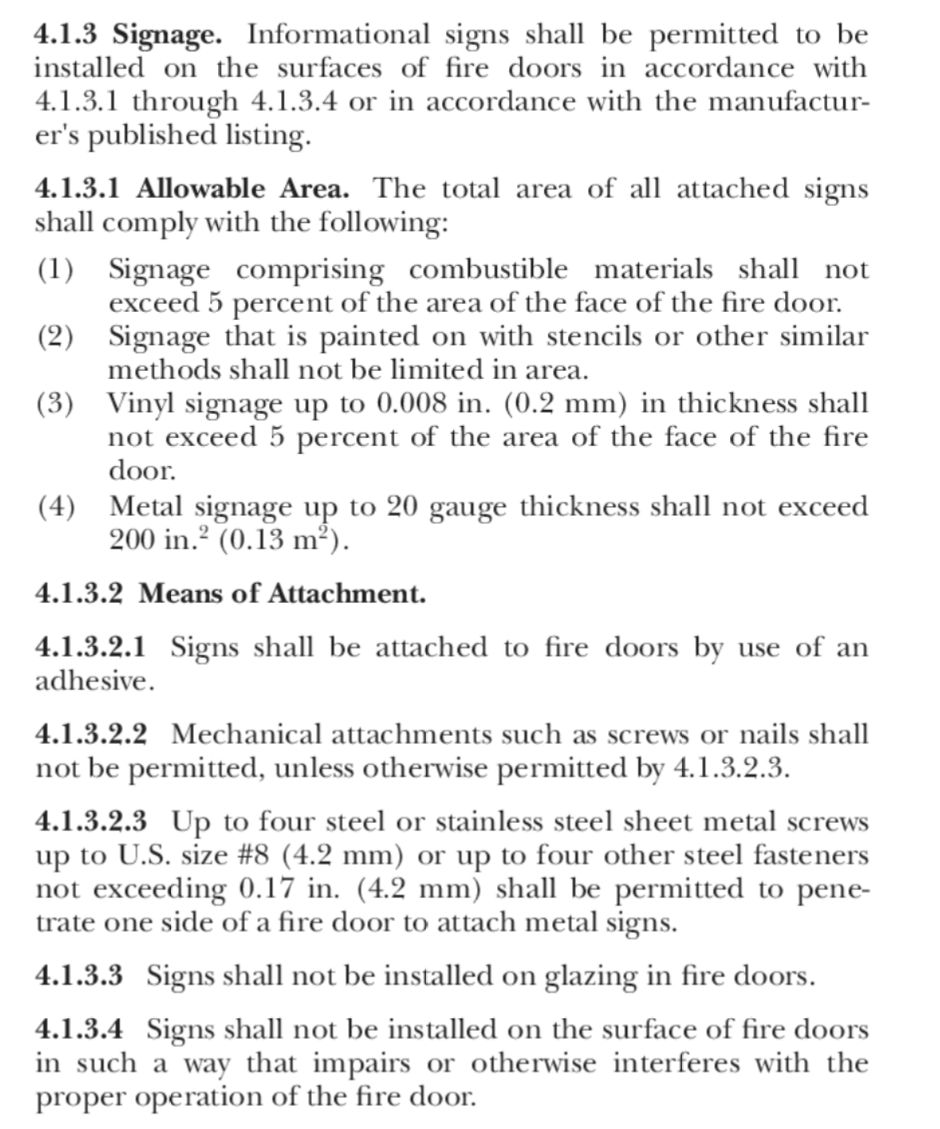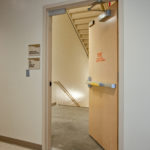 I appreciate the code development process and the resulting changes made to the codes and standards that apply to door openings. The frequent updates help the requirements keep pace with current technology as well as newly-identified threats. But sometimes there is a requirement that I’ve been teaching about for 20+ years, and a change means that eventually you will all have to re-learn what you previously knew.
I appreciate the code development process and the resulting changes made to the codes and standards that apply to door openings. The frequent updates help the requirements keep pace with current technology as well as newly-identified threats. But sometimes there is a requirement that I’ve been teaching about for 20+ years, and a change means that eventually you will all have to re-learn what you previously knew.
That’s the case with a change to the 2022 edition of NFPA 80 – Standard for Fire Doors and Other Opening Protectives. Note: You can buy a copy of the standard, access it using NFPA Link, or read the free online version on NFPA’s website. Can you spot the changes in the section addressing signage? Spoiler Alert: I’ve itemized them below. 😀
Informational signage is allowed on fire doors as described in NFPA 80 or by the manufacturer’s published listings – no change there. Moving on to the size…prior to the 2022 edition, the total area of all attached signs could not exceed 5% of the area of the face of the door – regardless of what material the sign was made of. The 2022 edition includes the same limitation of 5% but specifies that the limit applies to signage made from combustible materials or from vinyl up to 0.008 inches (2 mm) thick. If the signage is painted on with stencils or similar methods, the size is not limited. Metal signage up to 20 gage thickness may be up to 200 square inches in area – for a 3070 door, a sign of this size would be almost 7% of the 21-square-foot area of the door face.
The allowable means of attachment have also changed. Past editions of the standard required signage to be attached to fire doors with adhesive, and specifically prohibited the use of screws or nails. The 2022 edition allows adhesive OR up to 4 steel or stainless steel fasteners (sheet metal screws up to U.S. size #8 or up to 0.17 inch – I’m assuming diameter) IF the screws are used to attach metal signs and if they penetrate one side of the fire door. I predict that we’re going to see a lot more metal signs on fire doors in the future, as I would interpret the new language to mean that signs of other materials must still be attached with adhesive.
One more interesting change is the paragraph stating that signs shall not be installed on glazing in fire doors. This is consistent with the 2007, 2010, and 2013 editions of NFPA 80. However, the 2016 and 2019 editions specified that signs could not be installed on fire-protection-rated glazing, which indicated that signage would be allowed on fire-resistance-rated glazing. A paragraph in Annex A stated that when signage was required by code to be attached to a fire door (example: for a delayed egress lock), and there was no other option but to put the sign on the glazing, it should be fire-resistance-rated glazing that had been evaluated for temperature rise on the unexposed surface. This annex note does not appear in the 2022 edition, and paragraph 4.1.3.3 prohibits installation of signage on glazing without getting more specific.
And finally, NFPA 80-2022 states that signs must not impair or interfere with the proper operation of the fire door – this paragraph was also included in other editions of the standard.
Now before you run out and start installing metal signs with steel screws on your existing fire doors, keep in mind that the 2022 edition of NFPA 80 has not yet been referenced by a model code and is not being used in any jurisdiction that I know of. For health care facilities, it could be years before this edition is adopted by reference. Technically, in order to use the updated signage requirements of NFPA 80-2022, the AHJ would have to approve them as an equivalency or a code modification.
If your AHJ approves the use of the updated language, I’d love to hear about it!
You need to login or register to bookmark/favorite this content.










HI Lori
I noticed you used a European style sign in your article, although I’ve been away for a while, so that could have changed. Anyway, I have a question about our code development bodies in America and Europe. Do they look at each others codes for new ideas and trends or is it coincidental when they have some of the same guidance?
Hi Jim!
The sign was just an example of a fire door sign attached with fasteners instead of adhesive. 🙂
That’s a great question about European codes and American codes. Although there may be someone familiar with both who could propose changes, I have not seen a reason statement for a code change proposal that referenced a European code. Of course, I’m only looking at the door-related proposals.
– Lori